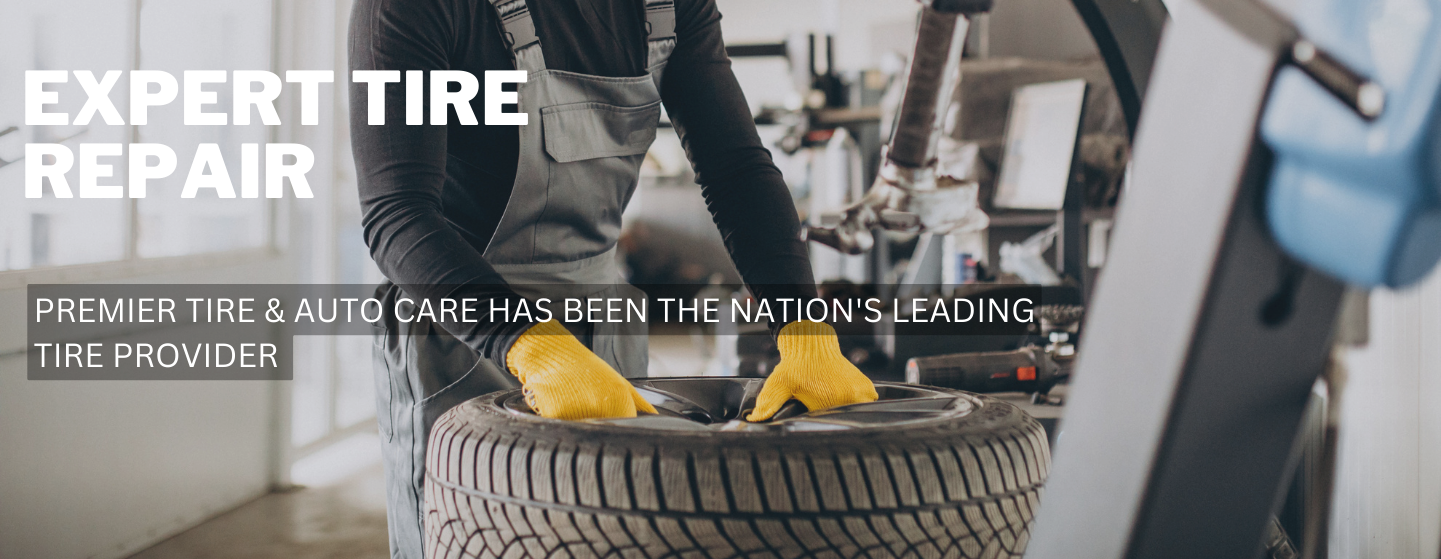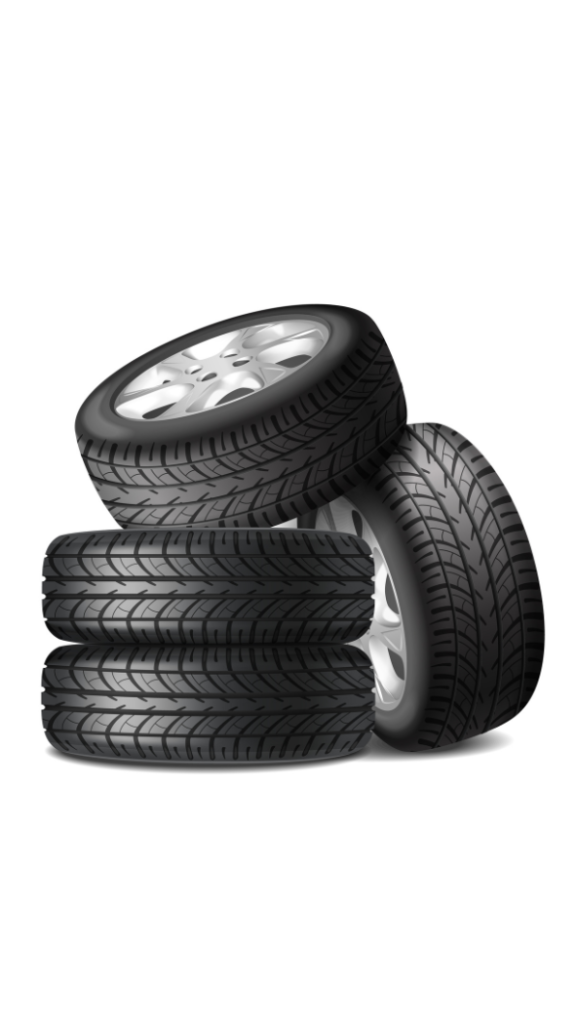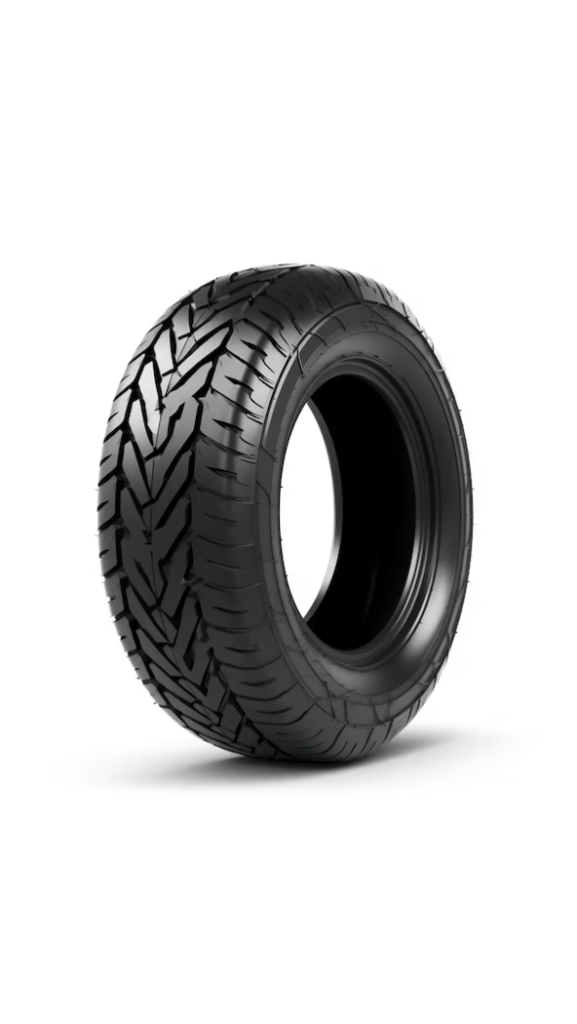
FLAT TIRE REPAIR, TIRE PATCHES, AND MORE
Navigating the rugged terrain of roads can take a toll on your tires, enduring everything from potholes to debris. Premier Tire Auto Care offers top-tier flat tire repair services, boasting a legacy of tire expertise since 2008. Trust us to restore America's tires to their prime condition when damage strikes. If you suspect tire issues, don't delay—visit a Premier Tire Auto Care location nearby. Whether it's a lit TPMS indicator, air loss, or an uneasy feeling while driving, our skilled technicians will assess your tires and advise on necessary repairs or replacements promptly. Addressing tire damage promptly is crucial to prevent further harm and expenses, such as rim damage. Whether it's a simple patch plug or replacement of a valve stem or TPMS sensor, rely on Premier Tire Auto Care for comprehensive tire solutions. Visit us today for unparalleled service and tire care.

TIRE REPAIR & PATCHING/PLUG
If your tires have remaining tread life and are under 10 years old, Premier Tire Auto Care can potentially repair or patch and plug them to swiftly return you to the road. However, it's important to note that not all tire damage is repairable, especially if the puncture is substantial.
TIRE REPLACEMENT
As time passes, the tread of your tires naturally diminishes, resulting in reduced traction and potentially hazardous driving situations. Typically, tires should be replaced within a range of 25,000 to 50,000 miles, varying based on the recommendations of the vehicle manufacturer and individual driving patterns.
TIRE ROTATIONS & BALANCING
Rotating your tires contributes to extending their lifespan by minimizing uneven wear. Typically, most vehicle manufacturers advise tire rotation every 5,000 miles or according to their specified mileage intervals. Additionally, tire balancing is crucial to evenly distribute weight across your tires, recommended every 5,000 miles or per your manufacturer's guidance. This practice results in smoother rides, decreased tire wear, and less strain on the drivetrain, promoting safe, efficient driving.

WHEEL ALIGNMENTS
It's advisable to have your alignment inspected every 6,000 miles or semi-annually. Even a single misaligned wheel can result in the steering wheel being off-center and contribute to accelerated wear and tear on your vehicle. Maintaining proper alignment ensures a smoother driving experience for you and enhances the longevity of your tires.
FLAT REPAIR
A flat or leaking tire can leave you stranded on the roadside or, worse, result in loss of control while driving. Address flat or leaking tires promptly to prolong tire durability and prevent potential roadside emergencies.
TIRE ROTATIONS & BALANCING
Rotating your tires aids in extending their lifespan by minimizing uneven wear. Typically, most vehicle manufacturers suggest a tire rotation approximately every 5,000 miles or following their recommended mileage guidelines. Additionally, tire balancing ensures that weight is evenly spread across your tires, essential every 5,000 miles or per your manufacturer's advice. Proper balancing results in a smoother ride, decreased tire wear, and less strain on the drivetrain, promoting safe, smooth, and efficient driving.
SHOULD I CHANGE A FLAT TIRE BEFORE COMING IN FOR TIRE REPAIR?
To maintain a safe journey and prevent potential damage to your rims or costly repairs, replace your flat tire with the spare tire before visiting your nearby Premier Tire Auto Care center for flat tire repair.
WHAT IF I REPLACE JUST ONE TIRE?
While it might be tempting to only replace the damaged tire, doing so can pose challenges in the future. This is because the new tire will have a different tread depth compared to the others, resulting in variations in acceleration, braking, and cornering capabilities.
WHY DO I KEEP GETTING FLAT TIRES?
Few things are as inconvenient as a flat tire—except perhaps experiencing consecutive flat tires. Discover the reasons behind recurring flat tires and learn how to prevent them from deflating your spirits!
WHAT IS POTHOLE DAMAGE?
Hitting a pothole on the road can lead to misalignment or damage in your vehicle's steering and suspension systems, tire punctures, bent rims, and other issues. Following a sudden jolt from encountering a pothole, prompt inspection is strongly advised.
Pothole damage might not manifest immediately, yet if left unattended, it can cause extensive problems for your vehicle. It's crucial to address pothole-related issues promptly and ensure they are resolved correctly from the start. If you've recently encountered a pothole, visit your nearby Premier Tire Auto Care for a thorough Complete Vehicle Inspection to detect any potential issues.
WHAT IS A TIRE PLUG VS A TIRE PATCH?
A tire plug offers a fast solution for a tire leaking air due to a nail or similar object puncturing it. However, relying solely on a tire plug is not advisable as it lacks reliability without a tire patch. A patch is installed on the inner side of the tire to reinforce the seal and securely hold the plug in position. This combination allows a tire with remaining useful tread life to maintain air pressure consistently, extending its longevity and keeping you on the road for an extended period.
CAN YOU REPAIR A RUN FLAT TIRE?
Run flat tires enable you to continue driving on a flat tire for a restricted period with reduced risk compared to non-run flat tires. If a nail or object is detected before significant tire damage occurs, a Run Flat tire can be repaired. However, if the tire sustains permanent damage, replacing it with a new one is necessary.
WHY IS MY TPMS LIGHT ON?
The Tire Pressure Monitoring System light indicates low tire pressure or a malfunction within the TPMS system. Understanding key TPMS warning light behavior is essential.
A solid TPMS indicator light signifies that one or more tires are operating with insufficient pressure, falling below the recommended level by 25% as indicated on the OEM recommendation placard. Typically, the recommended tire pressure is listed on a sticker located inside the driver's door. If this sticker is absent, you can usually find the specifications in the owner's manual.
A blinking TPMS indicator light indicates a malfunction within the system. This could result from the failure of one or more sensors or loss of communication with the vehicle's onboard diagnostics.
LEARN MORE ABOUT TIRE REPAIR



